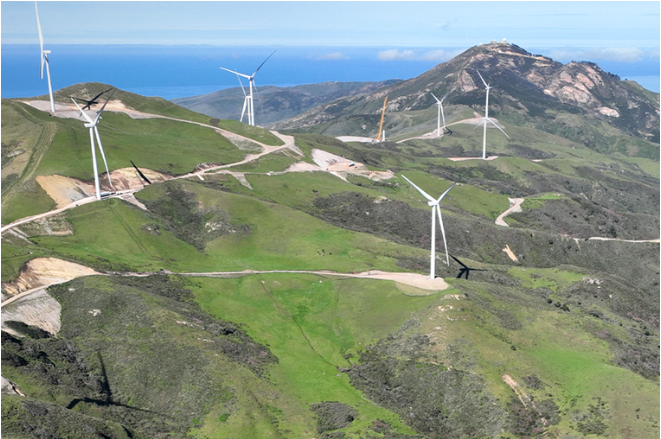
A FLIGHTY WIND: The developers of a new wind farm in the Santa Barbara County hills did something a lot of people thought was impossible, a local official said today: They finished an industrial-scale renewable project on California’s pristine and heavily regulated coast.
“Projects like this are really important as a counterfactual to change that narrative, to show that it’s possible to permit and operate in coastal counties,” county supervisor and former Assemblymember Das Williams said at a press conference today.
But if the projects continue to take as long as the 27-turbine Strauss Wind Energy Project, which began in 2001 and started up in December, California’s clean energy goals are in trouble.
The project, brought online by international developer BayWa r.e., is harvesting nearly 100 megawatts of renewable energy when California needs it most — in the morning before the sun comes up and in the evening after it sets and solar power drops off.
To keep up with its goals, California needs the equivalent of 70 more Strausses in the next 10 years, according to a California Public Utilities Commission plan published last week.
California was a pioneer in wind energy with Tehachapi Wind, one of the first large-scale projects to start construction four decades ago. But, stymied by local opposition, dense permitting rules, environmental protections and transmission shortages, it has fallen behind other states. Iowa has twice California’s wind; Texas six times as much.
Alex Jackson, director of American Clean Power-California, which represents BayWa and other developers, said the Strauss project was “good news,” but illustrates the challenges ahead.
“The lesson coming out of this is it can’t take decades for the projects to get off the finish line,” he said.
The state’s grid operator has lots of wind in its pipeline — about 13.5 gigawatts from 36 projects, according to data it keeps online — but some have been in the queue for 20 years.
Because it takes so long to build in California, developers have been looking elsewhere, like New Mexico and the Mexico side of the Baja peninsula. They can sell into California from there more easily than they can from the northeast corner of the state, which has promise too but needs more transmission.
Buzzy offshore wind projects are also gaining steam from the state’s target of 4.5 gigawatts by 2035, but they face their own opposition over marine impacts.
On land, developers are all watching what happens with a project in Shasta County. Fountain Wind, twice the size of Strauss and located on private land, was shot down by county supervisors in the deeply conservative area.
Texas-based developer ConnectGen is trying to override the local opposition using a new permitting process lawmakers approved two years ago that gives the California Energy Commission authority to approve or reject it.
“If that can’t be permitted, it’s going to really chill investment in California wind,” said California Wind Energy Association director Nancy Rader.